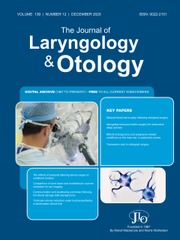No CrossRef data available.
Article contents
Identification of common bleeding points in intractable epistaxis
Published online by Cambridge University Press: 09 September 2025
Abstract
To localise bleeding points identified in patients with intractable epistaxis.
We reviewed all patients with intractable epistaxis who underwent endoscopic nasal examination under anaesthesia between 1989 and 2024 in a tertiary otolaryngology unit in Ireland.
In total, 194 patients were included. Bleeding points were identified in 85 per cent of patients (165 cases). In addition, 89 patients (46 per cent) had bleeding from the septum, 70 (36 per cent) of which were high on the anterosuperior septum above the axilla of the middle turbinate. It was also found that 77 patients (40 per cent) had bleeding from the lateral nasal wall: 44 (23 per cent) at the posterior end of the middle meatus and 33 (17 per cent) at the posterior end of the inferior meatus.
This study describes remarkably consistent bleeding point localisation in epistaxis failing first-line measures. We recommend detailed endoscopic examination as a first-line intervention in such instances. Direct cauterisation is the simplest method for controlling epistaxis, avoiding complex procedures such as arterial ligation or embolisation.
Information
- Type
- Main Article
- Information
- Copyright
- © The Author(s), 2025. Published by Cambridge University Press on behalf of J.L.O. (1984) LIMITED.
Footnotes
Alison McHugh takes responsibility for the integrity of the content of the paper

